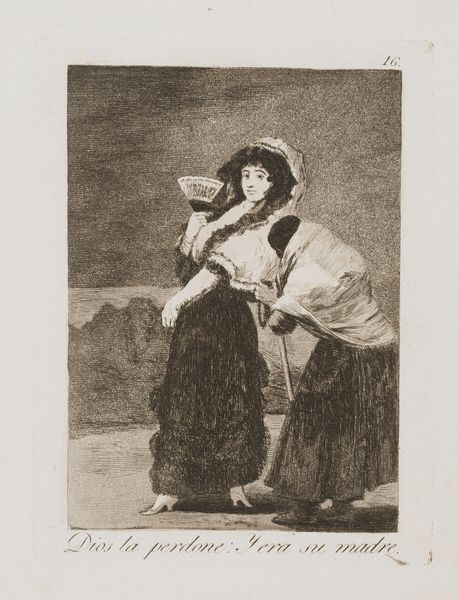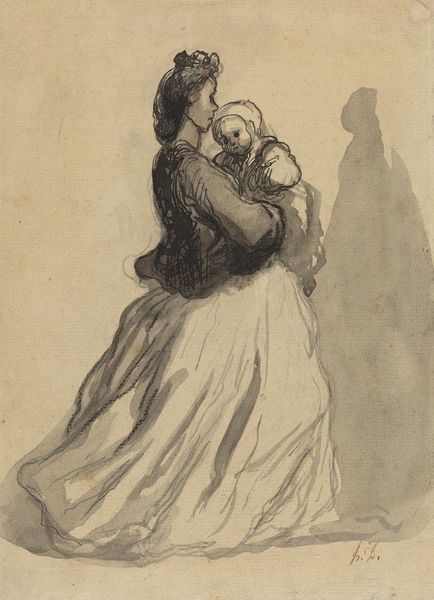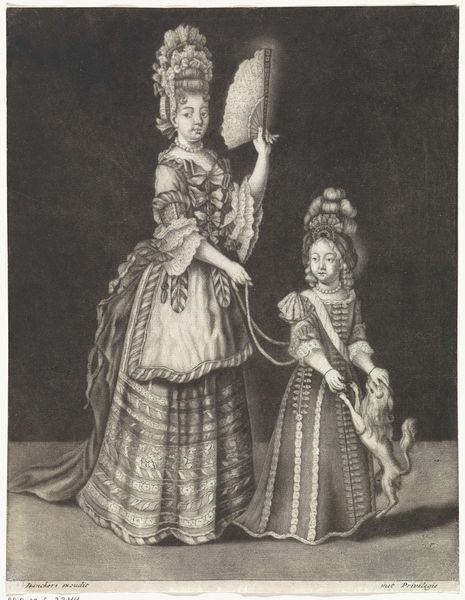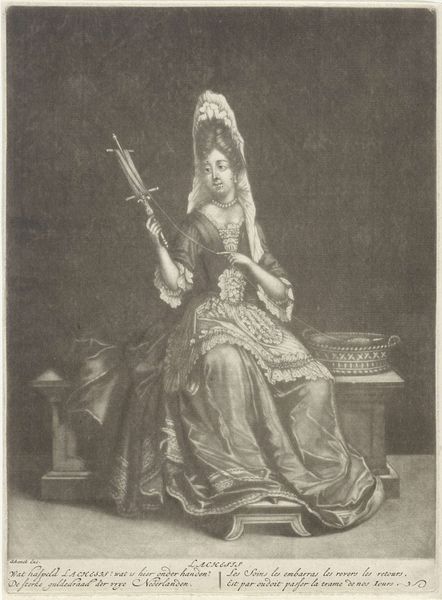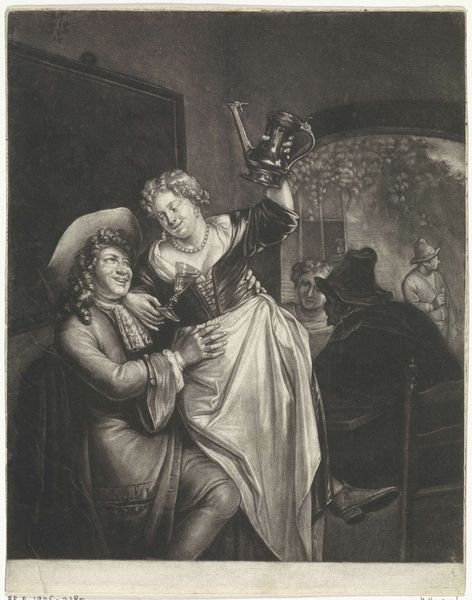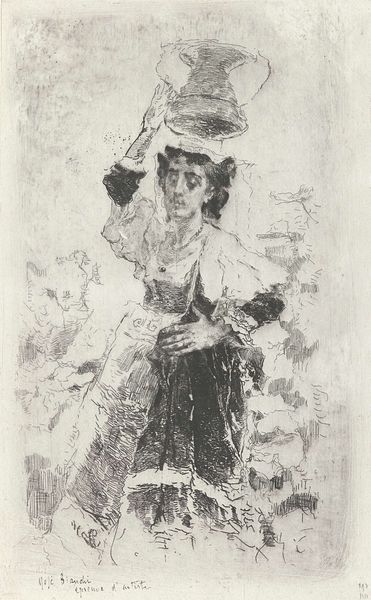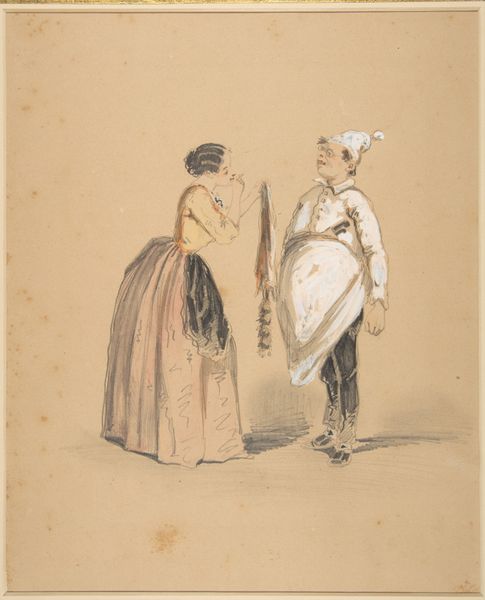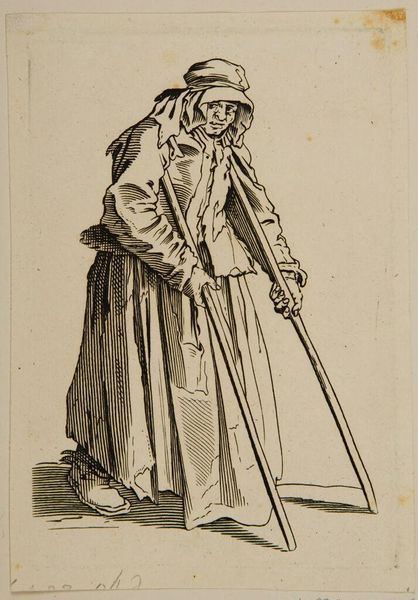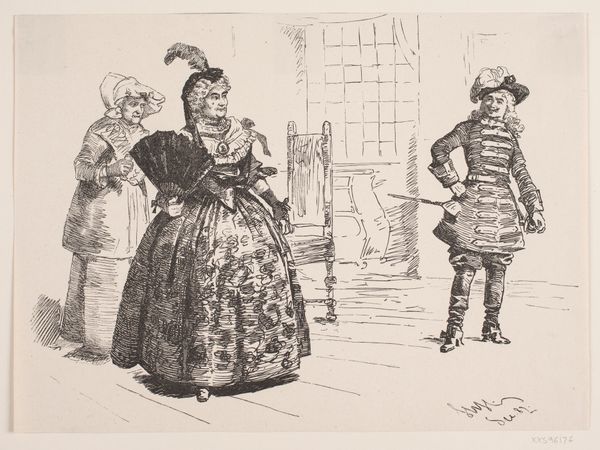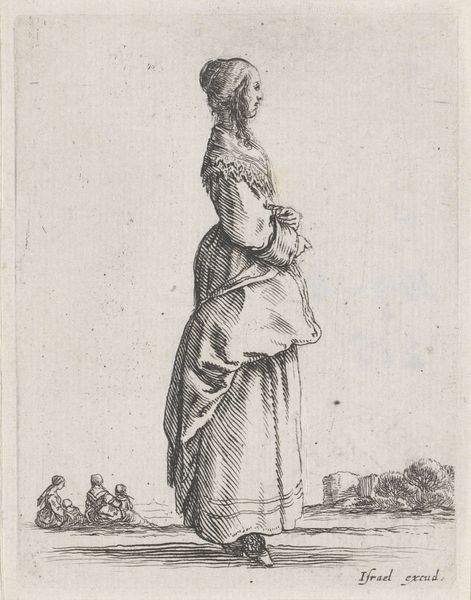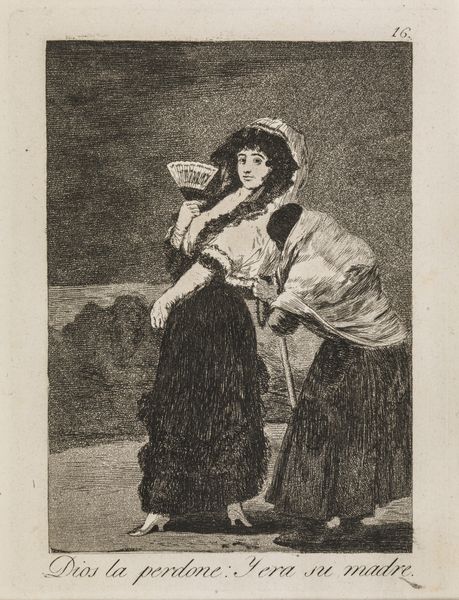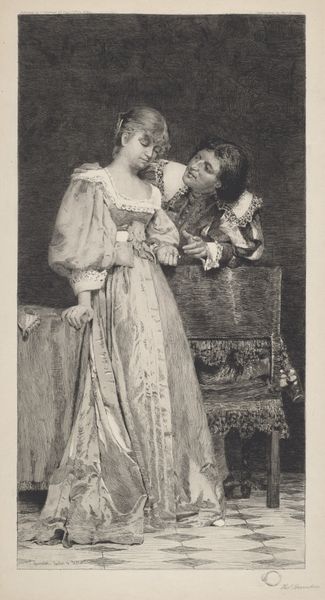
painting, oil-paint
portrait
painting
oil-paint
figuration
romanticism
genre-painting
history-painting
Dimensions: 30.5 x 25 cm
Copyright: Public domain
Editor: Goya's "The Duchess of Alba and Her Duenna," painted in 1795 with oil paint, presents an interesting dynamic. The Duchess, shrouded in shadow, brandishes a switch almost menacingly at the older woman. What kind of power dynamic is at play here? Curator: The duenna, with her concerned expression, touches her throat. It's as if she’s trying to protect herself. Notice how the duenna is bathed in light, contrasting with the shadowy Duchess. Light and shadow often represent knowledge and ignorance, exposure and concealment. Editor: So, is Goya using this light and shadow to tell us something specific about their roles, and how society at the time may have perceived their roles? Curator: Perhaps. And look at what the Duchess holds. What is she pointing? It is not merely a switch, I believe, it is an instrument of control. Is she threatening to punish the duenna? Or is this symbolic, a comment on the social structure? The averted gaze makes me wonder...is she ashamed? Editor: That’s intriguing! I was focused on the power imbalance and possible malice, but now I see this also could suggest social anxieties of the time...the duchess, even in a position of power, also being constrained. Curator: Exactly! And the dark background obscures the surroundings. Perhaps, the figures are caught in a personal drama and a reflection on shifting social mores. Editor: It is definitely not as straightforward as I first assumed. The symbol of the switch could really be interpreted on different levels. Curator: Goya asks us to look beneath the surface, search the subtext, question assumed meanings and what this switch symbolizes in this theatre of the social hierarchy.
Comments
No comments
Be the first to comment and join the conversation on the ultimate creative platform.
